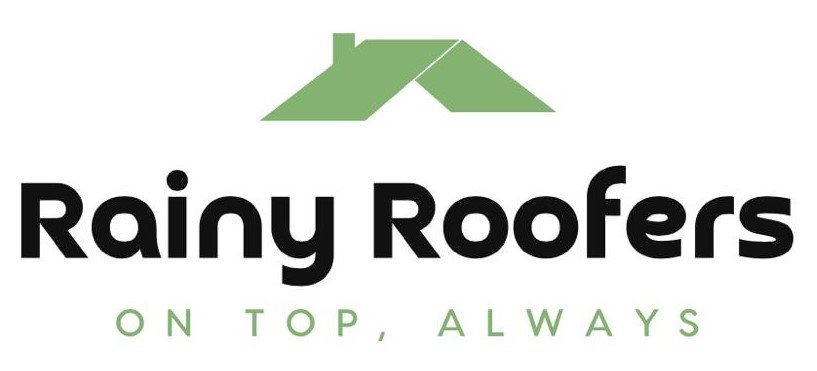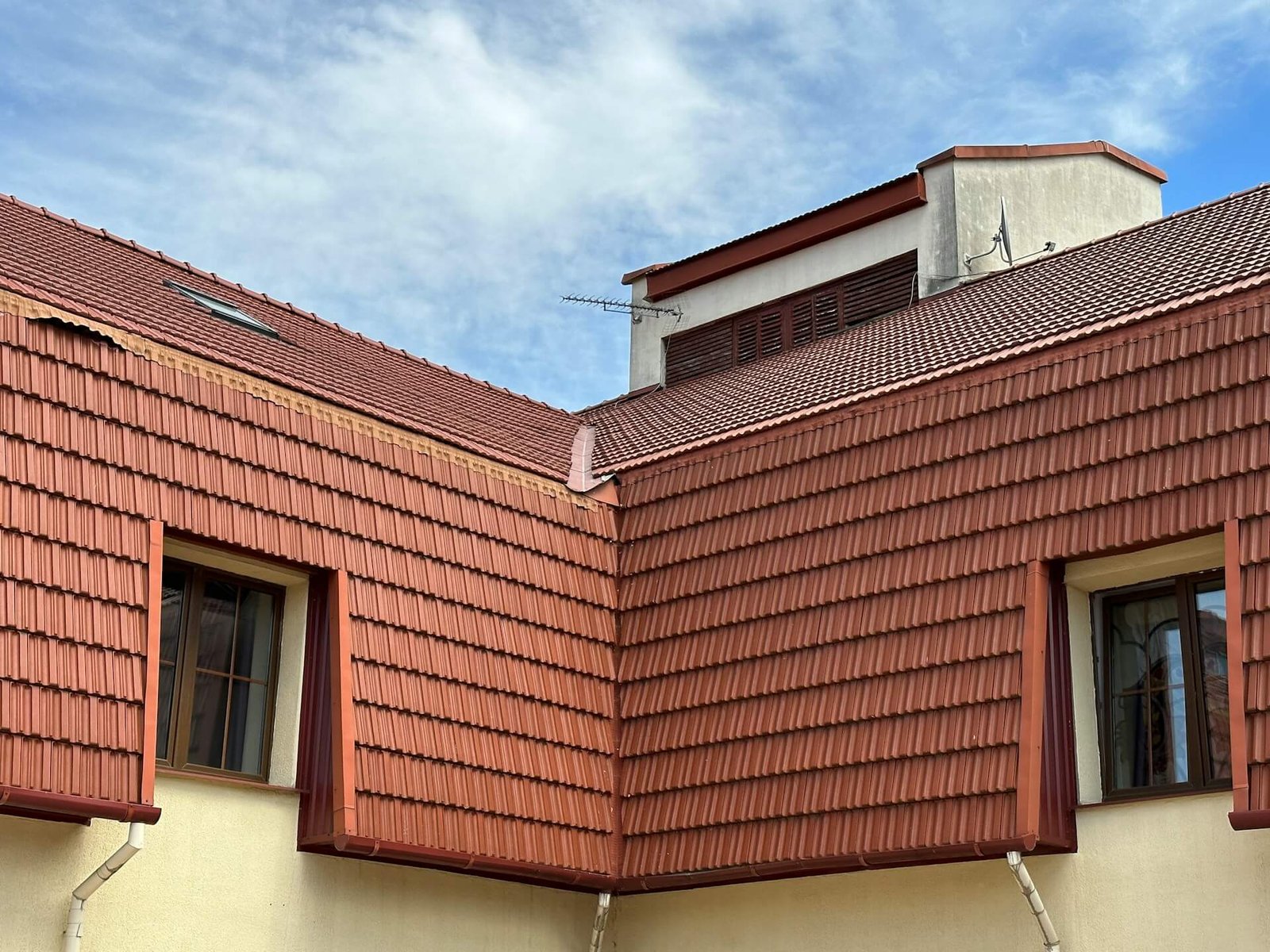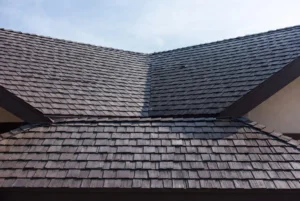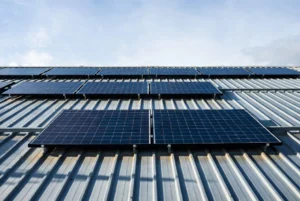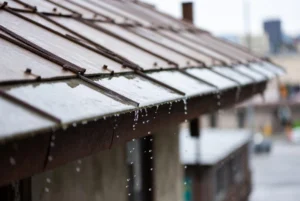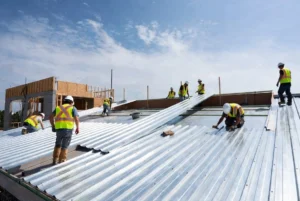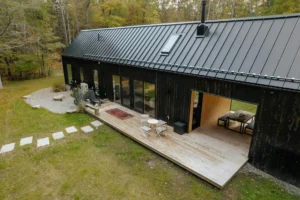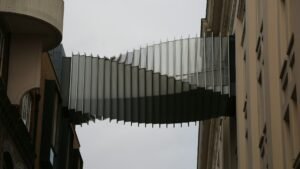When it comes to premium architectural coatings, Kynar 500 stands as the industry gold standard for protecting metal surfaces against the harshest environmental conditions. It is a high-performance PVDF (polyvinylidene fluoride) resin-based coating system that provides exceptional durability, maintaining its appearance and protective properties for over 30 years.
Developed by Arkema, this revolutionary coating technology contains a minimum of 70% PVDF resin, creating an incredibly strong molecular bond that resists UV radiation, chemicals, and extreme weather conditions.
What Is Kynar 500? Technical Composition
Understanding the science behind it reveals why it outperforms conventional coating systems by such a significant margin on metal roofing and how much effect it has on roofs after installation . The secret lies in its unique molecular structure and carefully engineered composition that creates an almost impenetrable barrier against environmental degradation.
Table 1: Its Chemical Composition
| Component | Percentage | Function |
| PVDF Resin | 70% minimum | Primary protective polymer |
| Acrylic Resins | 20-30% | Adhesion and flexibility |
| Pigments | 2-5% | Color and UV protection |
| Additives | 1-3% | Performance enhancers |
The molecular structure of PVDF features alternating carbon-fluorine bonds, among the strongest chemical bonds in organic chemistry. This fluoropolymer arrangement creates exceptional resistance to UV degradation, preventing the breakdown that causes conventional coatings to fade, chalk, and deteriorate.
The manufacturing process involves precise resin production with rigorous quality control, specialized pigment integration methods that ensure uniform dispersion, and strict application specifications that guarantee consistent performance.
The critical distinction between it and standard paint systems lies in the 70% minimum PVDF content requirement. Lower concentrations compromise performance exponentially—coatings with 50% PVDF last only half as long, while those below 30% offer minimal advantage over traditional paints. This threshold ensures the formation of a continuous fluoropolymer matrix that provides comprehensive protection rather than isolated pockets of resistance.
5 Key Benefits of Kynar 500 Coatings
The superior performance characteristics of it are translated into tangible benefits that justify its premium positioning in the coatings market of metal roofing. Each advantage contributes to the system’s overall value proposition, making it the economical choice for long-term applications.
- Exceptional Weather Resistance • UV radiation protection mechanisms utilize fluoropolymer bonds that don’t break down under solar exposure • Performance in extreme temperatures ranging from -40°F to 275°F without cracking or delamination • Resistance to acid rain and pollution through chemical inertness that prevents corrosive reactions
- Superior Color Retention • Maintains 95% color integrity over 20 years with Delta E measurements typically below 5 units • Delta E color change measurements provide objective proof of stability • Wide color palette availability ensures design flexibility without compromising performance
- Chemical and Corrosion Resistance • Protection against industrial chemicals including acids, bases, and solvents • Salt spray resistance for coastal applications exceeding 4,000 hours in testing • Prevents oxidation and rust by creating impermeable barrier layer
- Self-Cleaning Properties • Hydrophobic surface characteristics cause water to bead and roll off • Dirt and debris shedding capabilities reduce staining and buildup • Reduced maintenance requirements save thousands in cleaning costs annually
- Long-Term Warranty Coverage • 30-year fade and chalk warranties provide financial protection • 20-year adhesion guarantees ensure coating won’t peel or flake • Film integrity protection covers cracking and checking
- Environmental Sustainability • Low VOC formulations meet strictest environmental regulations • Cool roof certifications reduce urban heat island effects • LEED contribution points support green building certification
- Cost-Effectiveness Over Lifecycle • Reduced repainting frequency eliminates 2-3 coating cycles over 30 years • Lower maintenance costs save 60% compared to standard coatings • Energy savings from reflective properties reduce cooling costs 10-25%
Kynar 500 vs. Other Coating Systems
Comparing it to alternative coating systems demonstrates its superior value proposition despite higher initial costs. Performance metrics consistently show its outperforming competitors across every measurable category.
Table 2: Coating System Comparison
| Coating Type | Lifespan | Color Retention | Cost Index | Warranty |
| Kynar 500 PVDF | 30-40 years | Excellent (ΔE<5) | High | 30 years |
| Hylar 5000 PVDF | 30-40 years | Excellent (ΔE<5) | High | 30 years |
| SMP (Silicone Modified) | 20-30 years | Good (ΔE<10) | Medium | 20 years |
| Polyester | 10-20 years | Fair (ΔE<15) | Low | 10 years |
| Acrylic | 7-15 years | Poor (ΔE>15) | Very Low | 5-10 years |
Detailed performance comparisons reveal significant advantages in chalk resistance ratings, with its maintaining ratings of 8-10 after 20 years versus 4-6 for SMP and 1-3 for polyester. Gloss retention percentages show its retaining 80% of initial gloss after two decades, while polyester drops below 30%. Flexibility and adhesion tests demonstrate superior performance through thermal cycling and mechanical stress.
Cost-benefit analysis over 30 years shows it requiring zero recoat compared to three for polyester and two for SMP systems. When factoring labor, downtime, and material costs, the total expenditure favors it by 40-60%. Application-specific recommendations consistently specify it for high-visibility projects, coastal environments, and situations where maintenance access is limited or expensive.
5 Primary Applications of Kynar 500
The versatility and reliability of it makes it suitable for diverse applications across multiple industries, each benefiting from its unique protective properties.
- Architectural Metal Panels • Curtain wall systems on skyscrapers require decades of maintenance-free performance • Standing seam roofing applications demand weather resistance and aesthetic longevity • Composite panels (ACM) used in modern facades rely on color stability
- Commercial Roofing Systems • Cool roof applications reduce building energy consumption significantly • Energy-efficient buildings achieve certification requirements through reflective properties • LEED-certified projects earn points for sustainable material selection
- Industrial Facilities • Chemical processing plants need resistance to corrosive vapors and spills • Coastal installations face constant salt spray exposure • High-corrosion environments demand maximum protective capabilities
- Transportation Industry • Aircraft components require lightweight, durable protection • Rail car exteriors withstand weather extremes and chemical exposure • Marine applications resist saltwater and UV damage
- Specialty Applications • Solar panel frames maintain appearance while maximizing energy production • Satellite dishes retain precise shapes without coating degradation • Outdoor furniture and fixtures stay attractive despite constant exposure
Installation and Application Process
Proper installation ensures Kynar 500 achieves its full performance potential, requiring adherence to strict specifications throughout the application process.
Pre-treatment requirements establish the foundation for coating adhesion and longevity. Surface preparation standards mandate cleaning to remove oils, oxidation, and contaminants that could compromise bonding. Primer application specifications ensure compatibility between substrate and topcoat, with chrome-free options available for environmental compliance. Quality control checkpoints verify surface profile, cleanliness, and primer thickness before proceeding.
Application methods vary based on project requirements and substrate configuration. Coil coating process (continuous) provides the most consistent results for flat stock, with precise temperature and speed control ensuring uniform coverage. Spray application (field-applied) accommodates complex geometries but requires experienced applicators and controlled environments. Electrostatic application maximizes transfer efficiency and provides excellent edge coverage.
Thickness specifications determine long-term performance characteristics. Standard applications require 0.8-1.2 mils for optimal protection-to-cost ratio. Heavy duty specifications call for 1.5-2.0 mils in severe environments. Multiple coat systems build thickness while ensuring inter-coat adhesion.
Curing parameters activate the coating’s protective properties through carefully controlled thermal processing. Temperature requirements of 450-500°F achieve complete resin fusion without degradation. Time specifications balance throughput with performance, typically 40-60 seconds at peak metal temperature. Quality verification methods confirm cure completeness through solvent resistance and adhesion testing.
Cost Considerations and ROI
Understanding the financial implications of specifying it reveals its true value proposition when evaluated over the coating’s service life.
Initial investment breakdown shows material costs running 20-30% higher than standard coatings, justified by superior raw materials and manufacturing precision. Application costs remain comparable to other high-performance systems, though certified applicators may charge premiums for expertise. Certification and testing fees ensure quality but add $0.50-1.00 per square foot to project costs.
Long-term savings analysis demonstrates compelling economics through multiple factors. Reduced repainting cycles eliminate 2-3 complete recoating projects over 30 years, saving $15-25 per square foot. Energy savings of 15-25% on cooling costs accumulate to thousands annually for large buildings. Maintenance cost reduction of 60% versus standard coatings provides ongoing operational savings. Property value enhancement of 2-5% reflects the market’s recognition of quality materials.
Warranty value proposition provides financial security beyond simple cost calculations. Coverage specifics include color fade, chalking, and adhesion for 30 years, far exceeding industry standards. Transferability benefits enhance property value during sales transactions. Claim procedures, while rarely needed, provide straightforward resolution processes.
Project size considerations affect overall economics significantly. Volume discounts begin at 10,000 square feet, reducing per-unit costs 10-15%. Color selection impacts price, with standard colors costing less than custom matches. Custom color matching adds $500-2,000 in development and testing fees but ensures perfect aesthetic integration.
Conclusion
Kynar 500 represents the pinnacle of coating technology, delivering unmatched protection and aesthetic longevity that justifies its premium market position. The superior performance characteristics—from exceptional weather resistance to 30-year color retention—make it the logical choice for projects demanding long-term reliability.
